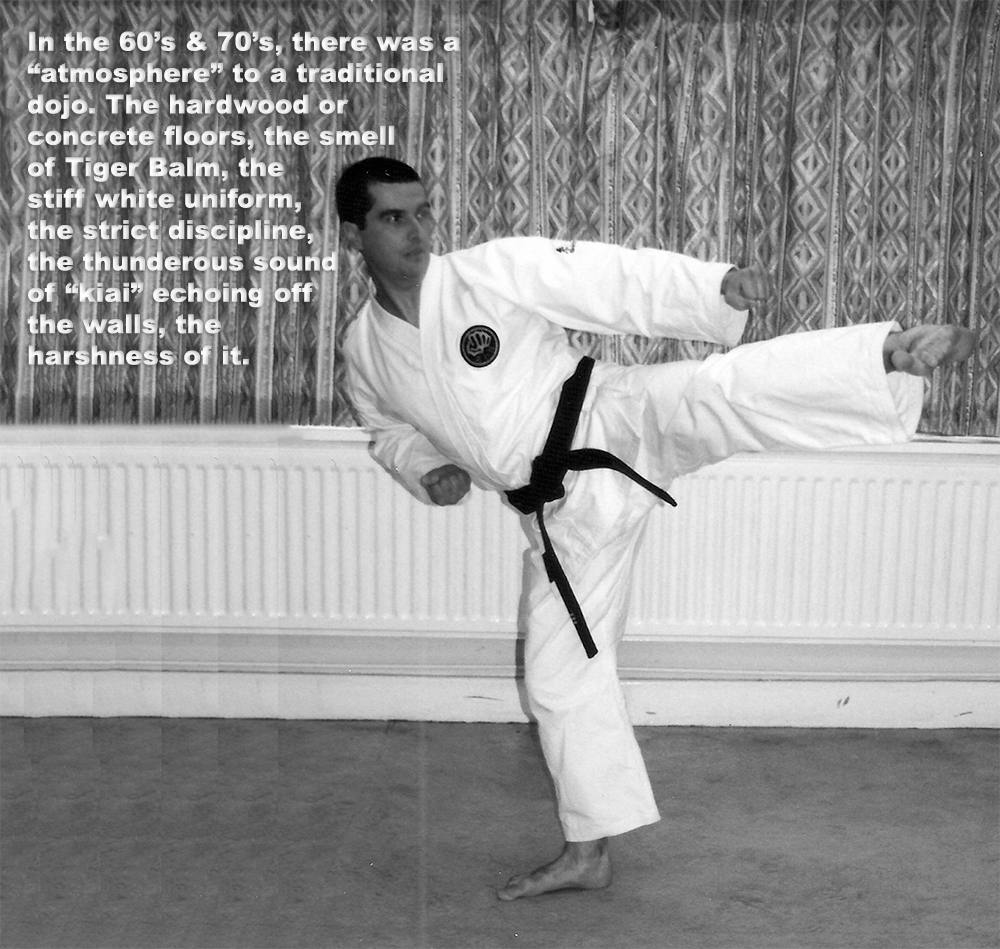
In the 60’s and 70’s, there was a “atmosphere” to a traditional dojo.
Posted by ADAM CARTER on DEC 06, 2022

In the 60’s and 70’s, there was a “atmosphere” to a traditional dojo.
In the 60's and 70's martial arts were a cult. If you missed a session everyone would want to know where you were. Training practices were harsh and very dangerous and injuries commonplace.
Everyone attended every seminar and every tournament. Barefoot runs to warm up, barefoot running in the snow during winter just wearing our karate-gi, bare knuckle full contact fighting was done nightly. We all thought we were warriors.
Today, many Dojo are a part of the gym culture, students tend to treat it like they treat the gym. With many things in their life that come before training. Students don't train if they don't feel like it, and they're not held to account by their peers.
It seems to be okay to stop and have a water or toilet break during a lesson, and they can't tell the difference between good and bad pain. It's rare to find durable, tough people.
The old training was tough and unrelenting, but a certain mental fortitude was forged. We certainly weren't allowed to have a water break in the middle of a class. But we were young, we thought the art was toughness, so we drove ourselves.
No hand pads or gloves, no body-protectors, no head-guards, pad work was your rolled up karate-gi top against your chest. Many kata practiced without a karate-gi top with the sting of a “shinai” often used for correction.
One thing that those traditional karate lessons did was instill a behavior pattern into us. Of respect, toughness, resourcefulness, dedication and hard work. It taught things that are hard to learn elsewhere, and those are lessons that have helped me throughout my life. A hard-style dojo was a unique environment.
Many of my present students wouldn’t have got through the door at our old dojo let alone lasted the first class.
Injuries were a common occurrence, being hit in the head was normal. There were dislocated fingers and shoulders, broken toes, ribs, feet, hands, and joint damage, oh and the blisters, all were common….. and we still came back to training.
In the 60’s and 70’s, there was a “atmosphere” to a traditional dojo. The hardwood or concrete floors, the smell of Tiger Balm, the stiff white uniform, the strict discipline, the thunderous sound of “kiai” echoing off the walls, the harshness of it. There were plenty of lessons to be learned in traditional karate and most of them were good lessons. It’s was a place of personal growth and development. A place where you could become a better person, a place where you could help others become better people. It’s was a good feeling, and a feeling that’s very hard to capture in any place but a hard style traditional dojo.
Back in the beginning, in the 60’s and 70’s, karate was the toughest thing around. Then commercialism set in. Vested interest. Profit. Keep the kids entertained. Now there is more. More styles, more systems, more of everything. Is it better today?
Sometimes I miss the old days.
Inspired by Steve Rowe 9th dan Shikon International.
